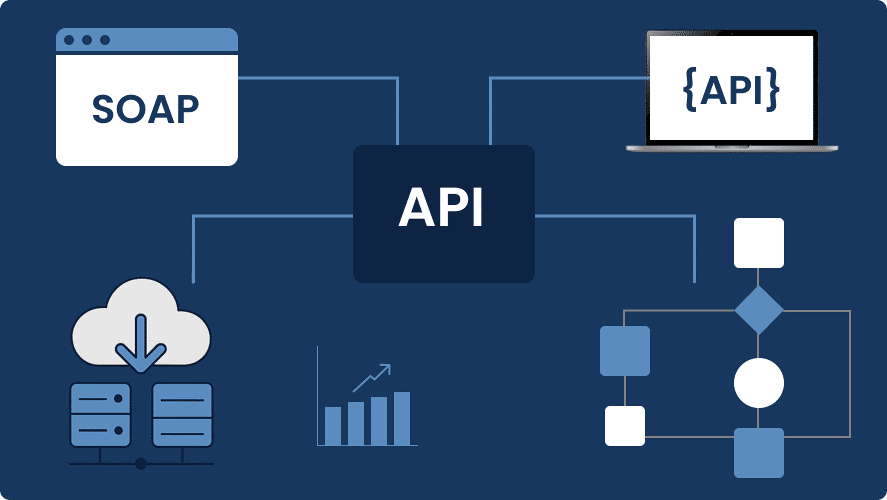The Evolution Of API
The onset of the Internet era coupled with the potential of the World Wide Web was a paradigm shift to deliver services over this new medium. Eventually, many companies raised the ante by offering services that transformed the brick and mortar model of product and service delivery into a virtual store.
While distributed systems were modelled around traditional SOA (Service Oriented Architecture) they had their limitations as they were limited to the organizational boundaries.
The evolution of API gained more steam when data was managed via the internet going beyond the organizational silos and using the data from multiple sources to offer valuable insights to customers.

The First Iteration
Perhaps, Salesforce was the flag bearer in realizing the data-led transformation. Their web-based sales automation tool was the first iteration of an API service and registering the format of data exchange over the internet called the SOAP (Simple Object Access Protocol).
SOAP provided a specification to exchange structured data in XML format. It was a much-needed innovation that made way for standardizing the XML-based data exchange for better interoperability of APIs over the web.
APIs In Web 2.0
The arrival of Web 2.0 changed the landscape of web-based applications as they advanced into complete suites of software products hosted on the web and modelled a real-world operation.
In the Web 1.0 era, web-based CRM software was restricted to providing a form for entering data and fetching reports to track the progress and KPIs. With the ensuing Web 2.0, the software established itself in assisting and analysing the customer lifecycle process, the operations, and the outliers, to provide more dynamic inputs.
Following this progress, it modelled a real-world agent analysing customer journeys via various channels of interaction and lessened the chores of a human operator to a greater extent while introducing the concept of Open APIs.
Developers began to publicly host the APIs for others to encourage them via a programmable interface as per the guidelines defined under the REST (REpresentational State Transfer) framework.
Impact Of API In Web 3.0
APIs typically followed the request-response pattern which served the purpose till now. However, the increasing dependency on web applications that is hyper-interactive with continuous human and machine collaboration in real-time demands an event-driven paradigm, where APIs are involved in the interaction.
Analysing Improvements In APIs
The transformation of SaaS into Xaas (Everything-as-a-Service), wherein a tangible object can be offered as a service has allowed software to be a quintessential model for real-world operation. Therefore it requires the need for APIs as a full-fledged business case around services.
Organisations have already realized the importance of breaking the data silos to share information across departments in a seamless way.
Middleware API modules are integral for any cross-functional or company-wide initiative. APIs provide the pathways to access the data and in the coming days, organizations will be deploying solutions that foster the API economy.
In a nutshell, it will enable organizations to seamlessly harvest data and convert that into meaningful business insights and monetisation opportunities.
Power Of API As Middleware
APIs have the ability to connect completely different services and products through a common layer. APIs can be deployed across multiple infrastructures, from on-premises systems to cloud ecosystems with varying architectures. The onus is on developers who are juggling languages, multiple tools, and frameworks. And the pressure to do more in less time at a lower cost becomes elusive.
The solution lies in turning to middleware as a way for organisations to manage the complexity. API as middleware can support application environments that work consistently and deliver smoothly across a highly diverse and distributed platform.
Epicode’s Cloud Telephony Enablers
Epicode’s CTE range of middleware products enable business applications like CRM, Lead management Systems and Campaign managers with Auto dialer, click to call and Call Progress Analysis ( CPA) capabilities through easy to use API integration.
Bottom Line
APIs are increasingly cementing their presence in the organisation's critical process owing to its customisation and integration into the services and products. With the great possibilities APIs could deliver and the layer of flexibility they add to your applications, when deployed correctly they can be a very powerful tool to interact with other services.